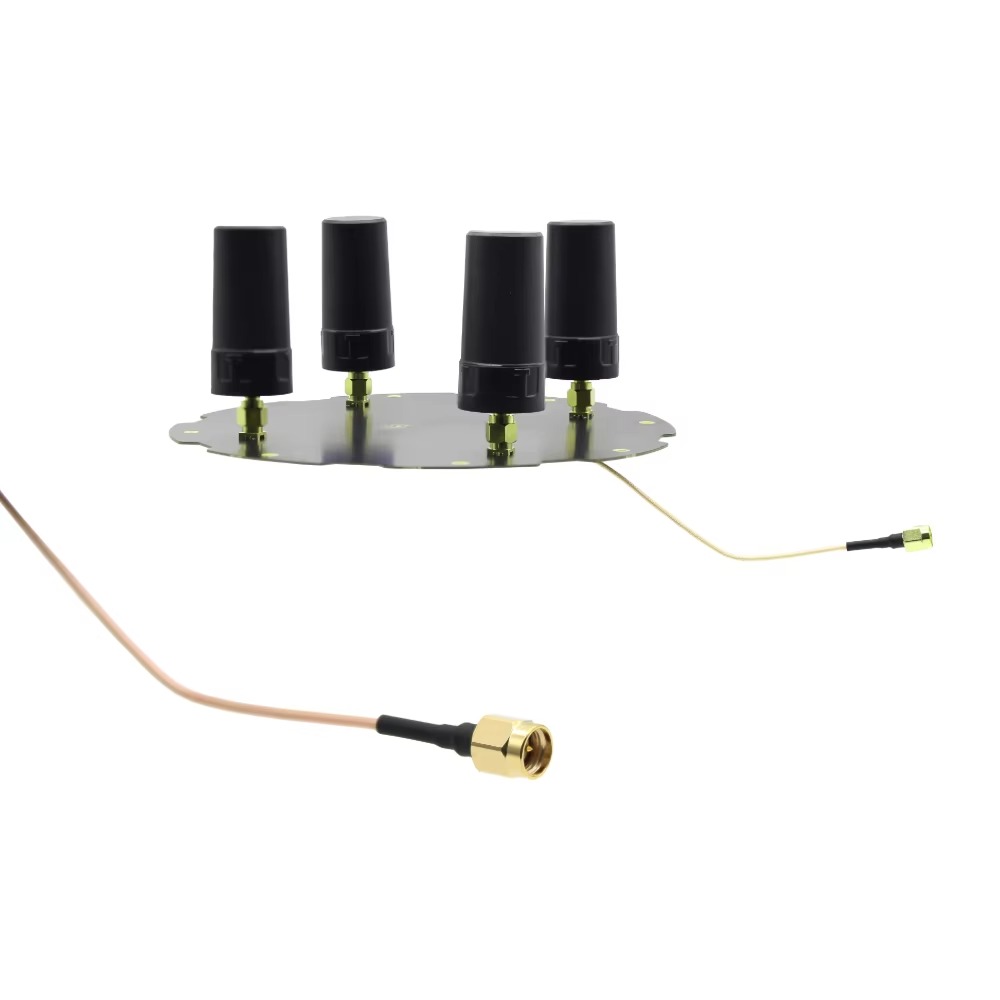Applications
Military-grade anti-jamming GPS antennas have a wide range of applications across all branches of the military. In land-based operations, they are used in armored vehicles, infantry combat systems, and unmanned ground vehicles (UGVs). These antennas enable accurate navigation through complex terrains, support target acquisition and engagement, and enhance the coordination of ground forces.
In the air, anti-jamming GPS antennas are installed on fighter jets, military transport aircraft, and UAVs. For fighter jets, accurate positioning is crucial for navigation during high-speed maneuvers, targeting enemy assets, and coordinating with other aircraft. UAVs rely on these antennas for autonomous navigation, surveillance, and reconnaissance missions, ensuring they can operate effectively even in areas where GPS signals may be at risk of interference.
At sea, naval vessels, including battleships, submarines, and patrol boats, use anti-jamming GPS antennas for navigation, maritime surveillance, and coordinating naval operations. In amphibious operations, these antennas help ensure the precise landing of troops and equipment on enemy shores.
In addition to combat applications, military-grade anti-jamming GPS antennas are also used in training exercises, search and rescue operations, and humanitarian missions. Their reliability and accuracy make them invaluable in a variety of military and non-combat scenarios.
Future Trends
Looking ahead, several future trends are expected to shape the development of military-grade anti-jamming GPS antennas. One significant trend is the integration of multiple navigation systems. In addition to GPS, other global navigation satellite systems (GNSS) such as GLONASS, Galileo, and BeiDou are becoming more prevalent. Future antennas will be designed to receive signals from multiple GNSS simultaneously, providing greater redundancy and enhanced resistance to interference. This multi-GNSS integration will also improve positioning accuracy and reliability in challenging environments.
The use of artificial intelligence (AI) and machine learning (ML) in anti-jamming algorithms is another emerging trend. AI and ML can analyze large amounts of data from the antenna and the surrounding electromagnetic environment in real-time. They can predict the behavior of jammers, adapt the anti-jamming strategies more effectively, and optimize the antenna's performance. This will enable the development of more intelligent and autonomous anti-jamming GPS antennas that can respond quickly and accurately to dynamic interference threats.
Advancements in materials science will also play a crucial role. New materials with improved electrical properties, such as metamaterials, will be developed for antenna construction. These materials can be engineered to have unique electromagnetic characteristics, allowing for more efficient signal reception and better interference rejection. Additionally, the development of lightweight, durable, and flexible materials will help reduce the SWaP of anti-jamming GPS antennas, making them more suitable for a wider range of military platforms.
Finally, the miniaturization of antenna components and signal processing units will continue. As military technology becomes more integrated and compact, there will be a growing demand for smaller, more powerful anti-jamming GPS antennas. Advances in microelectronics and nanotechnology will enable the development of highly integrated antenna systems that can fit into smaller devices without sacrificing performance.
Conclusion
In conclusion, military-grade anti-jamming GPS antennas are indispensable assets in modern military operations. Their ability to provide accurate and reliable positioning information in the face of interference threats is crucial for mission success, force protection, and strategic advantage. Through advanced design and construction techniques, innovative working principles, and continuous technological advancements, these antennas offer significant advantages in terms of reliability, accuracy, and adaptability.
However, the challenges posed by evolving jamming technologies, SWaP constraints, interoperability issues, and high costs cannot be ignored. Overcoming these challenges will require sustained investment in research and development, collaboration between military organizations and industry, and the adoption of emerging technologies.
As the military landscape continues to evolve, the future of military-grade anti-jamming GPS antennas looks promising. With trends such as multi-GNSS integration, the use of AI and ML, advancements in materials science, and miniaturization, these antennas will become even more powerful, versatile, and essential for maintaining military superiority in an increasingly complex and interconnected world. Continued innovation in this field will not only enhance military capabilities but also have potential spillover effects on civilian applications, driving the development of more robust and reliable navigation technologies for society as a whole.




































































 Language
Language
 En
En Cn
Cn Korean
Korean

 Home >
Home > 





 18665803017 (Macro)
18665803017 (Macro)













